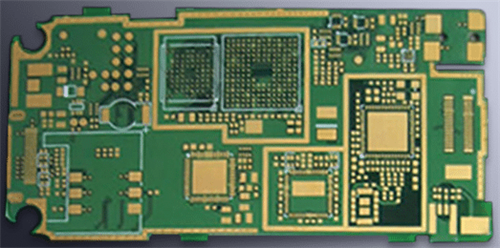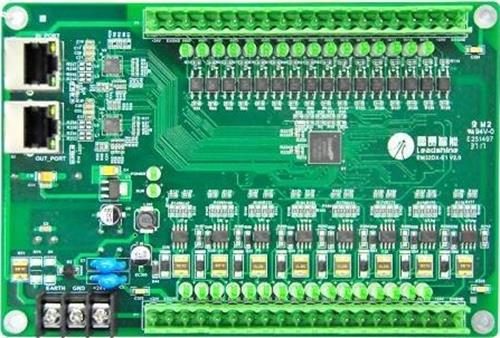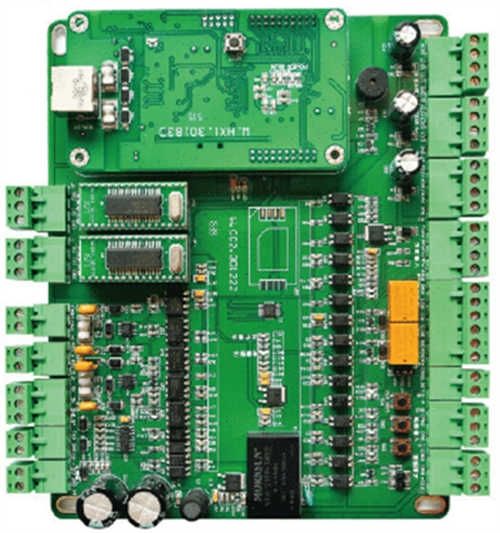About us
FASTPCBA Co.,Ltd
-
 Building 1, Senyang Electronic Technology Park, Guangming High-tech Park, Yutang Street, Guangming District, Shenzhen City.
Building 1, Senyang Electronic Technology Park, Guangming High-tech Park, Yutang Street, Guangming District, Shenzhen City.
-
 F:86-13418481618
F:86-13418481618
-
 pcba13@fastpcba.cn
pcba13@fastpcba.cn
 date:2019-07-02 15:05:00
date:2019-07-02 15:05:00
Multi-cause analysis and solution strategy for PCB flying probe test
With the rapid development of the PCB industry, the test equipment continues to be technically updated, and the market is increasingly demanding the stability and high efficiency of the test equipment. In order to make the test equipment more stable, people have a decisive role in ensuring that the test equipment is stable, reliable and efficient. During the test process, the phenomenon of false open circuit will inevitably occur. Especially when there are many false open circuits (≥10), the operation and process personnel should pay attention to it. It should be analyzed from equipment, process data and printed circuit board products. And solved.

First, determine whether the equipment is unstable
The easiest way to judge the normal operation of the equipment is to test the old document data that has passed the original test and the corresponding qualified PCB board (removing the surface oxide, etc.). If the open circuit still occurs, it should belong to the equipment failure, otherwise it should belong to the process data. Or the printed circuit board problem to be tested, when the equipment is asked, use the following methods for inspection and analysis.
1, Software maintenance
First, use the equipment maintenance (also called self-test) software to run according to the prompts to see if there are any damaged parts or errors: if there are damaged parts or errors, replace the corresponding parts and correct according to the error prompt.
Secondly, use the DMC software to check whether the feedback system of each axis is working properly. The correct operation steps are: test system minimization → open DMC under the (Start\\Program\\DMC) program or on the desktop (TEST with DMC appears) Interface)→Press the emergency stop switch→Move the axes by hand to observe the digital change and sensitivity of the grating feedback system of each axis, and whether the number changes within the specified range; then hit TESTXY.DMC and TESTZ.DMC→RUN to observe each Whether the axis can return to zero (the corresponding axis position reads '0').
2, Hardware failure
Hardware failures are more likely to occur in all faults, because the quality of the test system is closely related to the working environment (temperature, humidity, etc.) of the test equipment, the length of working hours, maintenance, etc. According to my summary, hardware failure There are Z-axis linear motors, grating scales, grating feedback data line adapters and L-type probes.
(1) Z-axis linear motor: Due to the long-term and high-frequency operation of the linear motor, it is easy to blacken the moving parts of the motor and cause black scale, which leads to inflexibility of the upper and lower sides and increased motor load. Therefore, the linear motor should be removed periodically (about 6 months) with anhydrous alcohol. When removing and cleaning, be careful that the guide rollers slide down.
(2) Grating scale: Grating is the core component of all high-precision equipment positioning. The quality of the grating is directly related to the accuracy and stability of the equipment. However, most of the gratings are caused by poor environment or poor air source. The workshop environment may cause too much dust on the surface of the grating, and the dust directly affects the feedback signal, resulting in more open circuit. In order to remove the dust on the scale, it should be cleaned with absolute ethanol. Pay attention to the use of fine gauze gloves (small anhydrous alcohol) for cleaning in one direction, not scrubbing and excessive force (to prevent scratching the grating). At the same time, the gas source should be dried, filtered, and filtered to enter the equipment, otherwise it will affect the service life and measurement accuracy of the equipment.
(3) Raster data feedback line adapter: PCB flying probe test equipment works faster, once the equipment is in working condition, there is strong jitter in the whole opportunity. Therefore, the raster data line connector may generally have poor contact with the socket after a period of use due to the inertia. In order to avoid this situation, the plugs should be checked and then turned on before starting each day.
(4) L-type probe: The quality of the stylus is also one of the important factors that cause the open circuit. The stylus is mainly characterized by pinpoint passivation, poor contact between the needle and the needle plug, and periodic calibration (at least 1 time/week). When the stylus is passivated, the stylus must be replaced. After changing the needle, remember to clear the number of times. Check whether the needle is loose between the needle and the needle at any time to ensure that the stylus is automatically corrected at least once a week.

Second, process data conversion
The new file process data is wrong when it is generated for the first time. This is also the reason for the open circuit. Many technicians make errors in the network map file generated during CAM data conversion. Most of the cases belong to the hole or pad properties of each layer and face. Inconsistent. Therefore, once it occurs, the process personnel are required to review the data files repeatedly.
Third, printed circuit board product problems
In addition to the exclusion of test equipment and process data, another situation should be a problem with the PCB product itself, mainly in warpage, solder mask, and character irregularities.
(1) Warpage: Some production planners often save the hot air leveling process in order to hurry, and send the final inspection directly. If the temperature is not passed through, the product warpage is greater than the allowable warpage range of the test equipment. Therefore, the process of heat leveling can not be less, and it is also required that the tester adds the warpage measurement before the test.
(2) Solder Mask: Products that are often more open-circuited will be unsatisfactory because some of the vias are blocked by the solder mask. Try to avoid the vias during the test (or ensure the hole guide) Pass the test.
(3) Characters: Many PCB manufacturers will first print characters and then measure them. As long as the position of the characters is slightly offset or the accuracy of the character film is not enough, the fine surface stickers and small holes may be covered by characters. Therefore, in order to avoid the open circuit caused by characters, the printed circuit board with fine surface mount, small hole (Φ<0.5), fine line and high density should be more reasonable in the process of first measuring the characters.

There are many reasons for the false detection of the electric circuit, but the general situation is not in the above three situations. In order to eliminate the problem as soon as possible, specific and comprehensive analysis should be carried out according to the specific situation to improve the efficiency.
 Building 1, Senyang Electronic Technology Park, Guangming High-tech Park, Yutang Street, Guangming District, Shenzhen City.
Building 1, Senyang Electronic Technology Park, Guangming High-tech Park, Yutang Street, Guangming District, Shenzhen City.
 F:86-13418481618
F:86-13418481618
 pcba13@fastpcba.cn
pcba13@fastpcba.cn